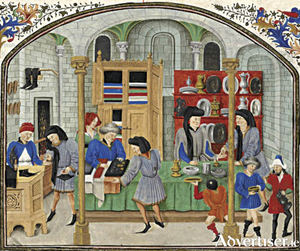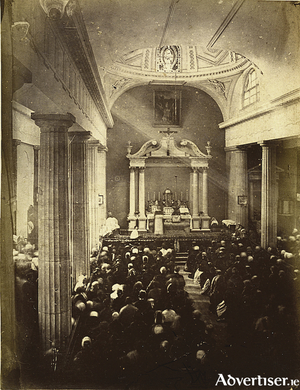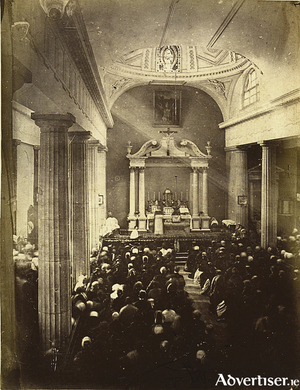Search Results for 'Henry VIII'
9 results found.
Through the glass darkly

In the English city of Norwich, if you go to the outskirts of the city, you will find the small church of St Julian. I have just finished reading a new novel by Claire called I, Julian, a beautifully written imagining of the life and times of this celebrated English mystic.
Through the glass darkly
In sonnet 78, by Shakespeare we catch the poet’s oblique allusion to the physical effects of the destruction wrought by the Reformation –
Warden Bodkin’s right hand is missing…
During the afternoon and evening of Sunday July 12 1691 the people of Galway could hear the distant thud of cannons as two armies in the Cogadh na Dá Rí (war of the two kings) was nearing its climax. The Irish army, led by the inept French general, Charles Chalmont, Marquis de Saint-Ruhe, known as Saint Ruth, and the heroic Earl of Lucan, Patrick Sarsfield, had taken a stand on Kilcommodon Hill, below which lay the village of Aughrim, some 5km from Ballinasloe, Co Galway.
The power merchants who ruled Galway

Under Norman rule Galway rapidly developed from an obscure village into an important seaport with trade contacts all over Europe. This transformation was entirely due to the merchant community who made themselves into an oligarchy who not only owned and directed the town’s trade, but completely controlled the municipal government, the election of mayors, and, uniquely, the appointment of priests and wardens to St Nicholas’ Collegiate church. They enjoyed total power. They lived in opulent houses, many of which had elaborately carved doorways, secure within the walls of the town, indifferent to the Gaelic natives who were kept firmly outside the gates.*
St Nicholas’ Collegiate Church and the city
Next year the magnificent building of St Nicholas’ Collegiate Church, this venerable edifice in the centre of our city will celebrate
The Abbey Church

In the year 1296, Uilliam Liath De Burgo started to build a monastery for the Franciscans on a site roughly where the Courthouse is today. It became known as “St Francis’ Abbey on the island of Saint Stephen on the north side of the town”. The island was formed by the river on the west side, and by a branch of the river running through what is Woodquay and Mary Street today, to join the main stream above O’Brien’s Bridge. A second and smaller island lay between St Stephen’s and the town wall, so in order to communicate with the town, two bridges were necessary, one at the junction of Mary Street and Abbeygate Street and the other at the Little Gate.
The Abbey Church

In the year 1296, Uilliam Liath De Burgo started to build a monastery for the Franciscans on a site roughly where the Courthouse is today. It became known as “St Francis’ Abbey on the island of Saint Stephen on the north side of the town”. The island was formed by the river on the west side, and by a branch of the river running through what is Woodquay and Mary Street today, to join the main stream above O’Brien’s Bridge. A second and smaller island lay between St Stephen’s and the town wall, so in order to communicate with the town, two bridges were necessary, one at the junction of Mary Street and Abbeygate Street and the other at the Little Gate.
A medieval tale of fashion, wealth and love

Hands up those who know who was the Coco Chanel of 15th century Galway?
The Collegiate Church
The Collegiate Church of St Nicholas of Myra is the largest medieval parish church in Ireland and its history is a kind of microcosm of the history of Galway. The earliest part of the present church dates from the beginning of the 14th century and includes the chancel with its three windows in the south wall. However it is possible that there was an earlier structure on the site. There is a legend that a man from the Aran Islands who died in 1580 aged 220 years could remember a time when the church did not exist but that just sounds a likely story. The records that exist suggest that the church was founded in or about the year 1320.

